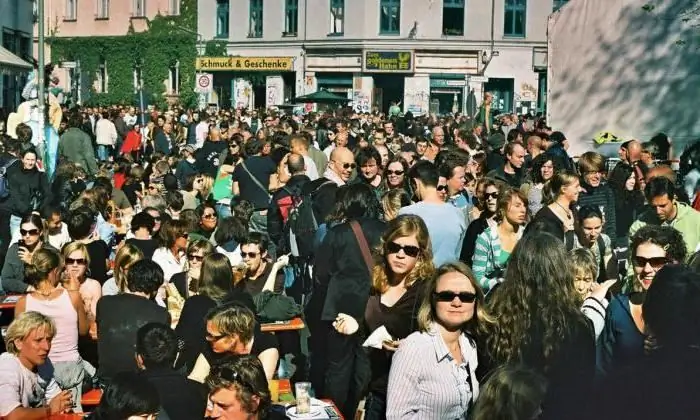- Author Henry Conors [email protected].
- Public 2024-02-12 02:55.
- Last modified 2025-01-23 09:07.
A small town in the Amur region is going through hard times. A priority development area has been organized here, which does not yet greatly affect its economic situation. The population of Belogorsk has been steadily decreasing since 2011.
General information

Belogorsk is the administrative center of the district of the same name and urban district, located on the left bank of the Tom River (a tributary of the Zeya) on the territory of the Zeya-Bureinskaya Plain. At a distance of 99 km in the south-west is the regional center of Blagoveshchensk. The territory of the settlement covers an area of 135 sq. km. The government of Russia has classified the city as single-industry towns, where the socio-economic situation may worsen. The population of Belogorsk in 2018 is 66 thousand people.
The city has become an important transport hub of the Trans-Siberian Railway in Soviet times. A little to the south of the city territory there is a railway to the regional center. Both directions have federal significance, connecting Belogorsk with other settlements of the country.
The early years

In 1860settlers from the Vyatka and Perm provinces, including the peasant families of the Baranovs, Mikhailovs, and Tretyakovs, founded the village of Aleksandrovskoe. In 1893, the village of Bochkarevka was built nearby, on a tributary of the Tom River. And in 1913, during the construction of the Amur railway, the Bochkarevo railway station was also built. Representatives of all Russian classes of nobles (the highest ranks of the military security guards and the railway), bourgeois, workers and peasants lived in the settlement.
In 1926, all three settlements were merged into the city of Aleksandrovsk-on-Tom, in which 7852 people lived. Then in the city there were 857 built-up properties with 1090 residential buildings.

In 1931, the population of Belogorsk at that time was 11,100 people. Thanks to the railway road, the city developed rapidly, gradually turning into an industrial center, an oil mill and a tannery, several mills worked. There were 2042 farms in it, of which 1914 were peasants. In the same year, on the initiative of the city communists, it was renamed Krasnopartizansk, and in 1936 it was named Kuibyshevka-Vostochnaya. According to the last pre-war census in 1939, 34,000 people lived in Belogorsk. The number of residents has increased, including due to the annexation of the village Vysokoe.
Recent Times

In 1957, the city was once again renamed Belogorsk, named after one of the parts of the city, which was built on a hill and in colloquial speechcalled "Mountain". The population of Belogorsk according to the first post-war census was 48,831 people. In the Soviet years, the city developed rapidly, new residential microdistricts, cultural and he alth facilities, and industrial enterprises were built. The development of the economy was greatly facilitated by a significant increase in freight traffic, including military traffic. Significant military forces were concentrated in the region. By the end of the Soviet period, the population of the city of Belogorsk was 75,000. This is the maximum number of residents registered in the city.
In the post-Soviet period, the number of city residents for the most part was constantly decreasing. In 2018, the population of Belogorsk was 66,183.






